
Ópalo etíope: Historia, simbolismo, significados y mucho más.
 Los ópalos provienen de todo el mundo, pero muchos yacimientos producen ópalos únicos y hermosos, incomparables a cualquier otro. En África, por ejemplo, se encuentran los ópalos etíopes de colores brillantes, a menudo llamados ópalos Welo.
Los ópalos provienen de todo el mundo, pero muchos yacimientos producen ópalos únicos y hermosos, incomparables a cualquier otro. En África, por ejemplo, se encuentran los ópalos etíopes de colores brillantes, a menudo llamados ópalos Welo.
Muchos entusiastas de los ópalos conocen a Australia como la capital mundial del ópalo , entonces, ¿existen realmente ópalos etíopes? ¡Definitivamente!
Aunque aproximadamente el 95% de los ópalos del mundo provienen de minas australianas, los recientes descubrimientos de ópalos en Etiopía han situado a esta mina africana muy cerca de Australia en términos de producción y calidad . Más recientemente, un ópalo negro etíope desempeñó un papel fundamental en la película de 2019 Diamantes en bruto .
Si eres principiante en el mundo de los ópalos, quizá solo conozcas esta gema como la piedra natal tradicional de octubre . Tal vez hayas oído hablar de la " maldición del ópalo " o simplemente conozcas la piedra por sus colores caleidoscópicos, pero hay mucho más que aprender, sobre todo acerca de los ópalos etíopes.
En esta guía, descubrirás las propiedades físicas y espirituales del ópalo etíope, ¡junto con la historia y el simbolismo que se esconden tras estas gemas fenomenales!

¿Qué es el ópalo etíope?
El ópalo welo etíope es un tipo de ópalo relativamente nuevo descubierto en las regiones montañosas del norte de Etiopía, sobre todo en la provincia de Wollo.
¿Cuál es la diferencia entre el ópalo y el ópalo etíope? Técnicamente, ninguna, ya que los ópalos etíopes siguen siendo ópalos, con la misma dureza de 5,5 a 6,5 en la escala de Mohs . Sin embargo, existen muchos tipos diferentes de ópalos , siendo las principales categorías los preciosos y los comunes .
Los ópalos preciosos se definen por su juego de colores , mientras que los ópalos comunes son aquellos que carecen de él. Los ópalos etíopes son apreciados por su vibrante juego de colores, que se presenta en numerosos tonos y patrones.
Una característica distintiva es que la mayoría de los ópalos etíopes son hidrófanos , lo que significa que sus superficies porosas absorben agua, cambiando su apariencia, tamaño y estabilidad al sumergirse. Estas piedras son opacas o translúcidas, como muchos ópalos, ¡pero el ópalo etíope se vuelve transparente en el agua!
En cuanto al color , los ópalos etíopes se presentan en varias variedades, desde colores sólidos como el negro, el rosa o el azul hasta arcoíris de tonalidades sobre diversos tonos de cuerpo .
Dicho esto, ¿cuáles son las diferentes variedades de ópalo etíope?
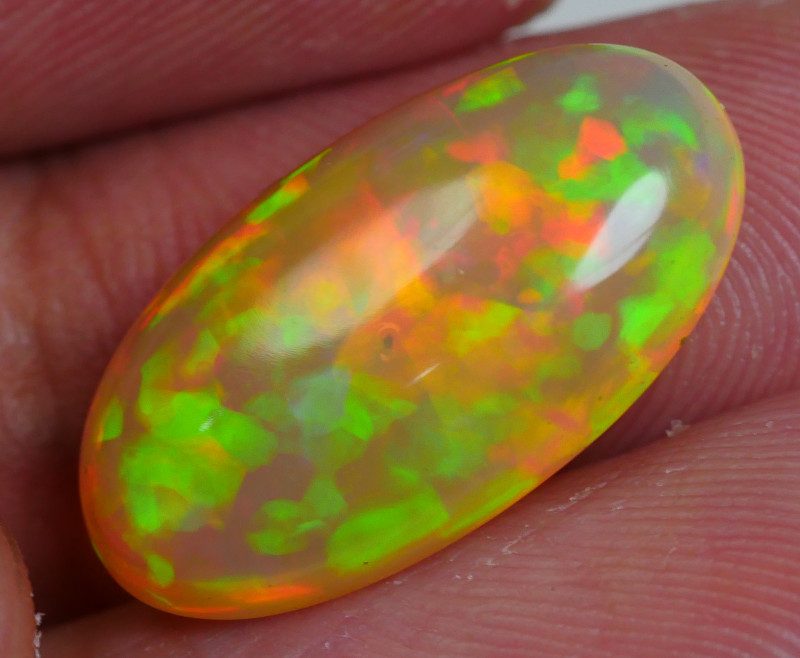
Tipos de ópalo etíope
Todos los ópalos etíopes presentan juego de colores, pero el tono base varía. Los tres yacimientos principales (que analizaremos con más detalle posteriormente) producen variedades distintas, entre ellas:
Ópalo de fuego precioso: Ópalos translúcidos y abundantes de la provincia de Wollo con el color rojo, naranja o amarillo característico de los ópalos de fuego y un juego de colores indicativo de ópalo precioso, que a menudo muestra destellos vibrantes de color púrpura y verde.
Ópalo negro: Ópalos negros naturales poco comunes que no son hidrófanos, encontrados en la mina Stayish de la provincia de Wollo, aunque muchos ópalos etíopes son tratados para que sean negros.
Ópalo de Shewa o Mezezo: Los primeros ejemplares etíopes descubiertos en 1994 en la provincia de Shewa, típicamente de color marrón rojizo, naranja o marrón chocolate, pero a menudo presentan problemas de cuarteado , un tipo de daño en el que el secado produce grietas en forma de telaraña.
Ópalo precioso blanco: Ópalos etíopes de color blanco, con un juego de colores brillante y una estabilidad mucho mayor que los ópalos de Shewa. Suelen encontrarse cerca de Wegel Tena.
Estos ejemplos no abarcan todos los tipos de ópalo etíope, ya que la cantidad de colores y patrones es comparable a la de los ópalos australianos. Hablando de esto, ¿en qué se diferencian los ópalos australianos de los etíopes?
Las principales diferencias entre los ópalos australianos y etíopes son que los ópalos etíopes suelen ser más grandes, más raros y menos costosos que los australianos.
Una diferencia significativa entre los ópalos australianos y etíopes reside en sus procesos de formación, ¡que analizaremos a continuación!
Propiedades de la gema ópalo etíope
A diferencia del ópalo australiano, que se forma en las profundidades de la tierra, el ópalo etíope se forma en las altas montañas. La actividad volcánica es la responsable de la formación de estos ópalos hidrófanos, que se presentan con forma de protuberancias (como bolas abultadas) en lugar de tener forma de veta como la mayoría de los ópalos.
Una vez extraídos, llega el momento de tallar y valorar estos ópalos, pero ¿cómo se clasifican? Dado que la piedra es relativamente nueva en la industria, la clasificación del ópalo etíope es compleja y algo subjetiva, pero generalmente se clasifica según el patrón, el brillo, los tratamientos y el color.
Patrón
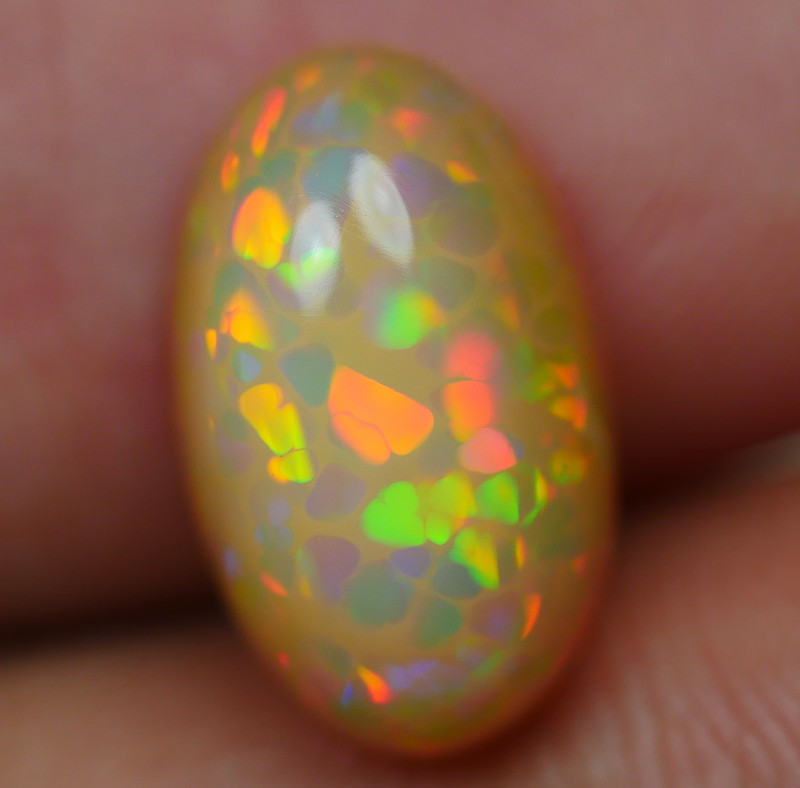
Los ópalos etíopes son únicos por sus variados y vívidos patrones, que van desde el Welo Broad Flash hasta el Fire Cloud. El patrón más codiciado es el de panal, exclusivo del ópalo etíope, donde el ópalo común forma una línea con inclusiones reticulares a lo largo de la piedra. Las piedras con patrones de panal se suelen tallar en cabujón .
Brillo
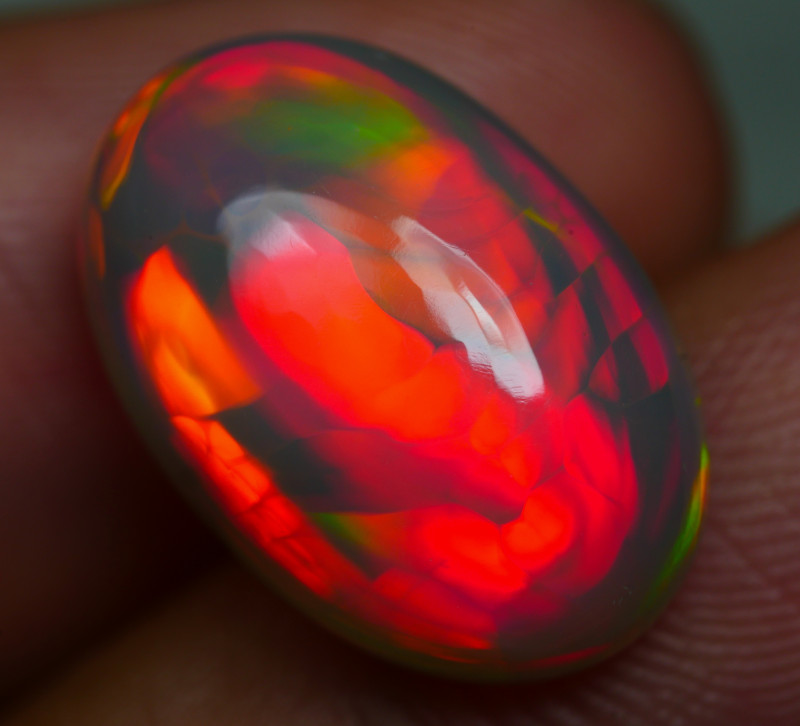
El brillo se refiere al «fuego» de la piedra, o los destellos de colores producidos por la dispersión de la luz. El fuego de muchos ópalos etíopes muestra un singular efecto tridimensional. En cuanto al color, son típicos los destellos azules y verdes, aunque ocasionalmente puede aparecer un destello rojo. En general, las piedras con un fuego más intenso y saturado alcanzan precios más elevados.
Tratos
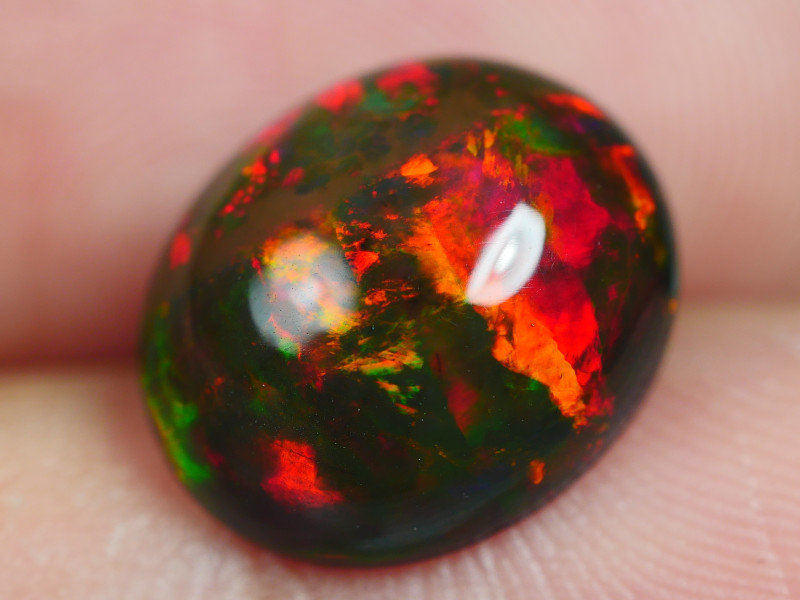
Se ha tratado una cantidad considerable de ópalos etíopes. Además de los tratamientos básicos de relleno para reducir el cuarteado, las tres técnicas principales son el tratamiento con azúcar y ácido, el ahumado y el teñido.
El tratamiento con azúcar y ácido consiste en sumergir el ópalo en agua azucarada y luego en ácido sulfúrico. El resultado es una acumulación de motas y manchas en la superficie que oscurecen el tono base, intensificando así el brillo del juego de colores.
El tratamiento con humo produce resultados similares. Este proceso consiste en envolver el ópalo en papel, calentarlo en un recipiente cerrado, enfriarlo y lavarlo. Los ópalos hidrófanos toleran bien el tratamiento con humo, pero esto dificulta su detección.
La naturaleza hidrófana de los ópalos etíopes también los hace idóneos para el teñido, algo que se observa comúnmente en los ópalos etíopes de color púrpura brillante o rosa, ya que estos colores no se dan de forma natural.
Color

Los ópalos etíopes pueden ser blancos, negros, azules, rojos, rosas, naranjas o marrones, según la mina. Los ópalos cristalinos incoloros provienen de la mina Wegel Tena.
El tono del cuerpo no es tan crucial para el valor del ópalo etíope como lo es, por ejemplo, para los ópalos negros. La principal importancia del color del cuerpo radica en su efecto sobre el brillo y los patrones de la piedra.
El color que se observa en los ópalos etíopes depende en parte de la provincia de procedencia, ¡un aspecto fundamental de la historia de la piedra!
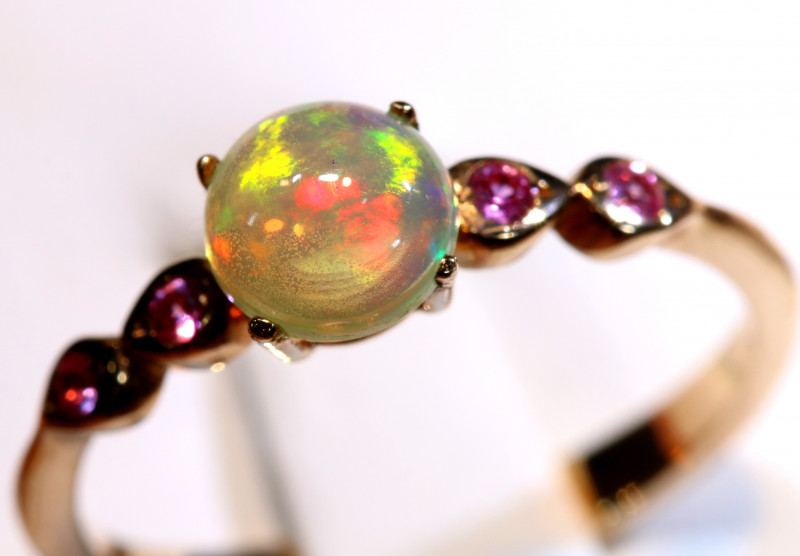
Historia del ópalo etíope
El descubrimiento moderno de ópalos etíopes se produjo hace apenas unas décadas. Sin embargo, los ópalos más antiguos hallados en una cueva de Kenia, que datan de aproximadamente el 4000 a. C., ¡probablemente eran ópalos etíopes! Los antropólogos creen que los primeros ancestros del ser humano usaban estos ópalos para fabricar herramientas.
Sin embargo, nuestros ancestros prehistóricos no las llamaban “ópalos”. El nombre “ópalo” proviene del antiguo sánscrito Upala , que significa “piedra preciosa”, y posteriormente del griego Opallios, que significa “ver un cambio de color”.
En 1994, unos mineros descubrieron el primer yacimiento de ópalo etíope en la provincia de Shewa. Estos preciosos ópalos se encontraban dentro de nódulos de roca volcánica y presentaban colores marrón, marrón rojizo o naranja. Desafortunadamente, también eran propensos a agrietarse.
En 2008, unos mineros descubrieron un segundo yacimiento en la provincia de Wollo, cerca de Wegel Tena. Los ópalos de Wegel Tena eran más duraderos que los de Shewa y presentaban variedades más atractivas, como ópalos blancos, cristalinos, de fuego y, ocasionalmente, negros. «Ópalo de Welo» pronto se convirtió en la denominación comercial de los ópalos de este yacimiento.
Curiosamente, los ópalos blancos de Wegel Tena presentan un alto contenido de bario, además de inclusiones de pirita y, en ocasiones, de carbono. Algunos ejemplares también muestran patrones digitales, donde capas de ópalo común y precioso crean un juego de colores que se asemeja a columnas digitadas.
El último gran descubrimiento, en 2013, tuvo lugar en la mina Stayish, también en la provincia de Wollo. Algunos ejemplares extraídos eran de ópalo blanco o cristalino, pero la mayoría eran de ópalo negro o gris oscuro.
Hoy en día, el yacimiento de Wegel Tena es conocido por sus impresionantes ópalos blancos y cristalinos, mientras que la mina de Stayish es conocida por sus ópalos negros.
El juego de colores del ópalo etíope es generalmente más intenso que el del ópalo australiano, y los túneles horizontales facilitan la extracción en comparación con los pozos verticales. ¡Los mineros etíopes ya han extraído más de 1.500 kg (3.300 libras) de ópalo etíope en bruto!
Dejando a un lado la geología, ¿qué significa el ópalo espiritualmente?
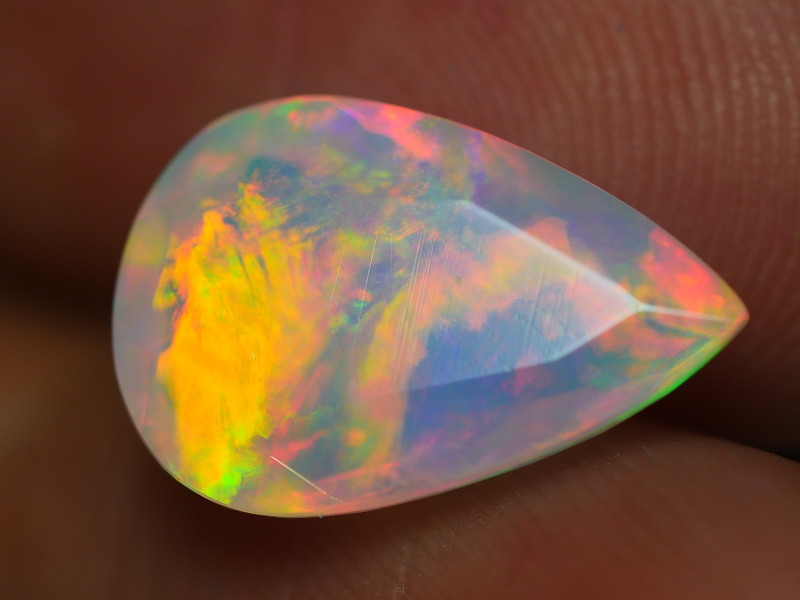
Significado y simbolismo del ópalo etíope
Al igual que otras gemas de ópalo , el ópalo etíope simboliza la esperanza, la suerte y la inocencia. Además, estas piedras representan el entusiasmo y la creatividad.
¿Qué significado tiene el ópalo de fuego etíope?
Los ópalos de fuego simbolizan la pasión, la calidez y el amor. Representan una profunda sanación emocional y la confianza en que todo sucede por una razón. Al regalarse, estas piedras son símbolo de lealtad y amistad.
Originarias de Etiopía, estas joyas ya poseen una rica historia cultural. Conocida como la "tierra de los orígenes", Etiopía es donde vivieron los primeros humanos, de donde surgió el primer café y es la única nación africana con su propio sistema de escritura.
Otras culturas también han adoptado sus propios significados espirituales para el ópalo etíope. El folclore árabe cuenta que los ópalos descendían del cielo a través de relámpagos, mientras que los aztecas los utilizaban para protegerse de maldiciones como el mal de ojo.
¿Cuáles son las propiedades místicas del ópalo en la actualidad?
¿Para qué sirven los ópalos etíopes?
Las propiedades físicas del ópalo etíope son paralelas a muchas de sus propiedades curativas, particularmente en su composición hidrófana y destellos de color.
Así como estos ópalos hidrófanos absorben agua, pueden ayudar con la deshidratación, la retención de líquidos y la fatiga. ¡También se dice que estas piedras mejoran la salud de los ojos, el cabello y la piel!
Emocionalmente, el ópalo etíope beneficia a quienes luchan contra la indecisión, la comunicación o el pesimismo. Los destellos de color brillantes de la piedra recuerdan que hay que aprovechar las fortalezas, dejar atrás la negatividad y perseguir proyectos creativos.
El aspecto espiritual del ópalo etíope es iluminador, pues posee propiedades purificadoras que pueden ayudarte a sentirte más pleno. Una afirmación con ópalo etíope para meditar es: «Estoy libre del pasado y listo para el futuro».
Chakra de ópalo etíope
Para la sanación de los chakras, el ópalo etíope se conecta con el chakra corona. Ubicado sobre la cabeza, este chakra rige la autorrealización y la espiritualidad.
Cuando el chakra corona está bloqueado, puedes sentirte inestable o con resistencia al crecimiento. El ópalo etíope puede abrir este chakra, aportando sabiduría y conexión espiritual con el universo.
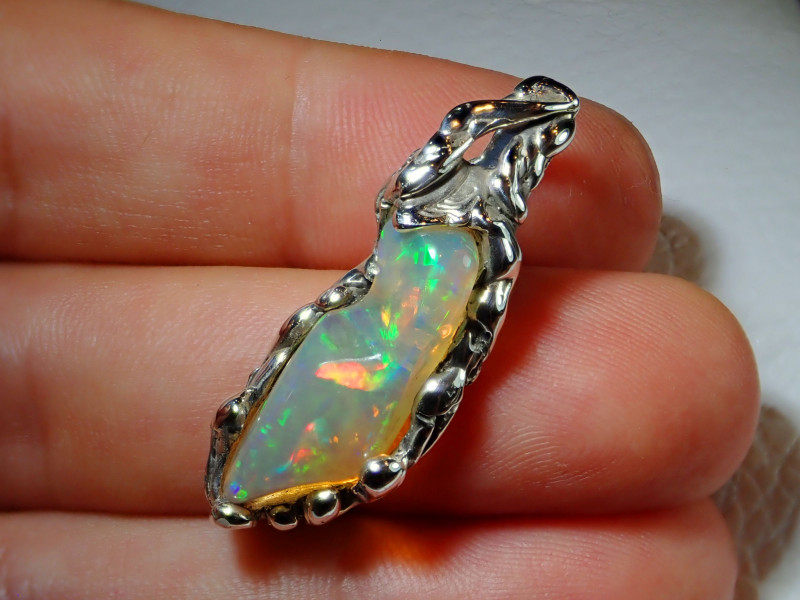
¿Fascinado por el ópalo etíope?
Ya sea que prefieras el ópalo negro, blanco o de fuego, en los ópalos etíopes encontrarás todo lo que deseas y mucho más. Gracias a su rica historia y propiedades curativas, lucir un anillo de ópalo etíope es la manera perfecta de celebrar tu cumpleaños en octubre o simplemente de presumir de tu estilo único.
Buscar en el Opal Encyclopedia
Subastas relacionadas
Artículos relacionados
Todos los poemas de esta página pertenecen a sus respectivos autores. Se prohíbe su reproducción no autorizada.
9th May 2018
Internet ha transformado nuestra forma de comprar y ahora puedes adquirir ópalos online. Te guiaremos para que sepas qué buscar y cómo hacerlo.
5th Mar 2019
últimos artículos
Los ópalos negros son la variedad más codiciada, con bases profundas que crean un arcoíris de reflejos en la parte superior. ¡Descubre los usos, las propiedades, la historia y el valor de los ópalos negros!
7th Dec 2025
Descubra cómo se clasifican los ópalos y qué factores influyen en su precio. Desde el color y el brillo hasta la talla y el origen, aprenda cómo se valora cada tipo de ópalo, con ejemplos de rangos de precios.
19th Jul 2023
¡Acompáñanos en un viaje y descubre el poder curativo de los ópalos de la mano de nuestra escritora invitada Vivien Schapera, de Crystal Healing Techniques!
20th May 2023
Categorías de artículos
All there is to know about Opals including Black Opals, Ethiopian Opals & Boulder Opal
14 Artículos
Check out our fascinating information and articles on all things amazing in the Opal world
41 Artículos
Opal Auctions sellers who are approved as opal Verified Sellers
4 Artículos



![LARGE MASSIVE DENDRITIC OPAL ROUGH [FJP2844 ]](https://liveplatforms-production.b-cdn.net/tenants/oa/uploads/images/125000-129999/128236/128236_1220859633.jpg?width=480&aspect_ratio=1001%3A1000)
![470 CTS MASSIVE OPAL SLAB FROM YOWAH [BMA1322]](https://liveplatforms-production.b-cdn.net/tenants/oa/uploads/images/130000-134999/133558/133558_1223867634.jpg?width=480&aspect_ratio=1001%3A1000)
![930 CTS MASSIVE BOULDER SPECIMEN [BMA560A ]](https://liveplatforms-production.b-cdn.net/tenants/oa/uploads/images/115000-119999/116972/116972_7.jpg?width=480&aspect_ratio=1001%3A1000)